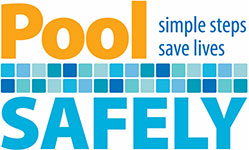
Who’s liable when someone’s injured while swimming?
Americans LOVE to swim.
According to the Centers for Disease Control and Prevention (CDC), swimming is the 4th most popular recreational activity in the United States and the most popular recreational activity for children ages 7-17. There are an estimated 10 million swimming pools in the US and roughly 91 million people swim in oceans, lakes, and rivers every year.
Unfortunately, swimming is not without risk. Even a casual dip in the pool can end in serious injury or death.
Swimming pool injuries and statistics
Approximately 10 people die from unintentional drowning every day in the US according to the CDC. Roughly 20% of these people are children under the age of 14.
Tweet this
Of course, swimming accidents don’t always end in death. For every person who dies from drowning, 5 people receive emergency department care for nonfatal submersion injuries. These injuries range from minor to severe and include:
- Brain damage. When a person is drowning, water enters their lungs and deprives the brain of oxygen. The part of the brain that controls thinking and memory is the first area of the brain to be harmed as a result of oxygen deprivation. As a result, victims of near-drowning accidents often suffer debilitating memory loss, seizures, learning disabilities, paralysis, and may even slip into a permanent vegetative state. In most cases, brain damage begins to occur after 5 minutes of oxygen deprivation.
- Recreational water illnesses (RWIs). RWIs are caused by germs and chemicals in the water. They are spread by swallowing, breathing, or having contact with contaminated water. RWIs include gastrointestinal, skin, ear, respiratory, eye, neurologic, and wound infections.
- Aspiration pneumonia. Aspiration pneumonia is a lung infection that develops after a person inhales water into their lungs.
- Acute respiratory distress syndrome (ARDS). ARDS is a severe lung condition that occurs when water fills up the air sacs in a person’s lungs.
- Hypothermia. Hypothermia occurs when your body loses heat faster than it can produce heat. Believe it or not, a person can get hypothermia even when it’s hot outside and the water is relatively warm. To avoid hypothermia, keep an eye out for the signs (shivering, altered judgment, blueness of the fingers, toes, or lips) and get out of the water when they appear.
Though it’s uncommon, it’s actually possible to drown after you get out of a swimming pool.
The term “dry drowning” refers to an incident that occurs after you’ve inhaled a small amount of water (usually from a brief struggle in the pool). The water irritates your airway and when you exit the pool your muscles start to spasm and you choke.
Similarly, “secondary drowning” occurs when your lung tissue becomes irritated (usually from a near-drowning incident). This irritation leads to inflation which causes your lungs to create fluid. It’s this fluid (rather than the pool water) that you drown in. Frighteningly, this can happen 24 hours after you’ve left the water.
Dry drowning and secondary drowning account for 1-2% of all drowning deaths, and can also lead to long-term respiratory problems and brain damage.
Who’s at risk of drowning?
According to the CDC, children ages 1-4 are the most likely to drown, followed by children ages 5-7. Males are far more likely to drown than females, and minorities (particularly Black Americans) are much more likely to drown than whites.
In addition, the following factors increase the risk of drowning:
- Lack of swimming ability
- New parents
- New pool owners
- Multiple children around the pool
- Underestimating the mobility of a toddler
- Lack of pool barriers
- Lack of close supervision
- Failure to wear a life jacket
- Seizure disorders
- Alcohol use
When is a pool owner liable?
Most swimming pool accident cases are premises liability cases. The term “premises liability” refers to a set of rules that impart certain duties on landowners.
Some states base the specific duties owed on the status of the visitor. In these states, visitors are generally divided into 3 categories.
- Invitees: Someone who foreseeably enters the property even if they weren’t granted express permission (such as a resident entering a public pool)
- Licensees: Someone with express or implied permission to enter the property for non-business reasons (such as a friend invited over for a pool party)
- Trespassers: Someone not authorized to be on the property
The specific duties owed can generally be described as follows:
- Invitee: Invitees are owed the highest degree of care. Landowners must keep the property reasonably safe and warn of dangerous conditions.
- Licensee: The landowner must warn the licensee of unsafe conditions that the landowner knows about and the licensee is not likely to discover.
- Trespasser: Landowners don’t owe trespassers any duty of care unless the trespasser is a child. If the trespasser is a child, the attractive nuisance doctrine applies and the landowner must exercise reasonable care to avoid a reasonably foreseeable risk of harm to children caused by an artificial condition that might be attractive to children (such as a swimming pool).
Once the duty owed is determined, the injured person must prove that:
- The landowner breached the duty owed,
- The breach caused the harm, and
- The injured person was in fact harmed.
In states that don’t base the duties owed on the status of the visitor, landowners generally owe ALL VISITORS a duty to maintain their land in a reasonably safe condition and to warn of dangers that are known or knowable.
So what does all this mean?
Generally speaking, if a landowner leaves their pool inadequately protected or unsupervised, they’ll be liable for any injuries that occur.
Of course, other laws may apply and other parties may be held liable depending on the nature of the accident. For example, if a swimmer holds another swimmer underwater, the swimmer may be guilty of battery. Or if a pool pump malfunctions and injures a swimmer, the injured swimmer may be able to file a product liability lawsuit against the manufacturer of the defective pool pump.
Specific requirements for residential pool owners
Most states have adopted specific laws that establish minimum standards with respect to the design, construction, installation, and location of swimming pools. If a person fails to meet these standards and someone is injured or killed as a result of this failure, the pool owner will likely be held liable.
Specific requirements for public pool owners
Similar to residential pools, most states adopt minimum standards for public pools. Again, if the owner of a public pool (likely the town, city, or county) fails to meet these standards and someone is injured as a result, the owner will likely be liable.
Defenses to swimming pool accidents
When a swimmer is injured and the pool owner is sued, they will look to establish that the swimmer caused the accident or was at least partially at fault for the accident.
States typically deal with shared fault in 1 of 4 ways:
Fault Systems by State
View Full Size Get the Code Use this graphic on your site
Use this infographic on your site
We encourage people to use our infographics, with proper attribution. Just copy and paste the code below to use this infographic on your site. If you need help, let us know!
<a href="https://www.enjuris.com/personal-injury-law/shared-fault-rules/" target="blank"><img src="https://www.enjuris.com/wp-content/uploads/2022/10/fault-systems-by-state-2022.gif" alt="Fault Systems by State" title="Fault Systems by State" style="width: 100%; max-width: 987px; display: block; margin: 15px auto;" /></a>
Swimming pool accident damages
In most states, 3 types of damages are available in a swimming pool accident:
- Economic damages are the monetary damages you suffer. These include past and future medical expenses, past and future lost wages, and anything else that has a specific “price tag” attached to it.
- Non-economic damages refer to losses that don’t have a specific dollar value, such as the pain and suffering associated with the injury.
- Punitive damages are those damages that are awarded to punish the defendant when the defendant acted with actual malice.
In the event that a person dies in a swimming pool accident, certain members of the deceased's family can file a wrongful death lawsuit. In order to recover damages, the family member will have to prove liability the same way the deceased would have had to prove liability had they survived.
If the family member is successful, they can typically recover damages based on the following factors:
- The financial dependency of the survivors of the deceased
- The future earnings of the deceased
- The cost of medical, funeral, and burial services
- The value of the emotional distress caused by the death
How to prevent pool accidents
Pool safely, a campaign to improve pool and spa safety launched by the US Consumer Product Safety Commission, has the following tips for avoiding pool accidents:
- Never leave a child unattended in or near water
- Teach children how to swim
- Teach children to stay away from drains
- Ensure all pools and spas have compliant drain covers
- Install proper barriers, covers, and alarms on and around your pool or spa
- Learn how to perform CPR on children and adults
Have you or a loved one been injured in a pool accident? Don’t tread water. Use the Enjuris Lawyer Directory to contact an attorney in your area.
Pool Safely is a national public education campaign from the U.S. Consumer Product Safety Commission (CPSC). Learn more about how Enjuris and Pool Safely help make water play and summer fun safer for families!
See our guide Choosing a personal injury attorney.


